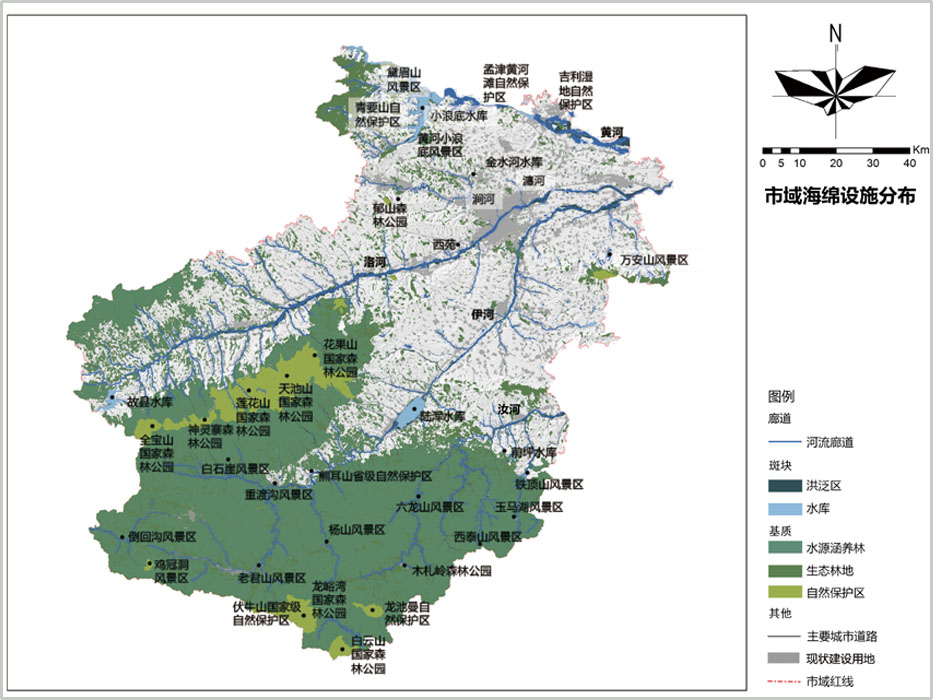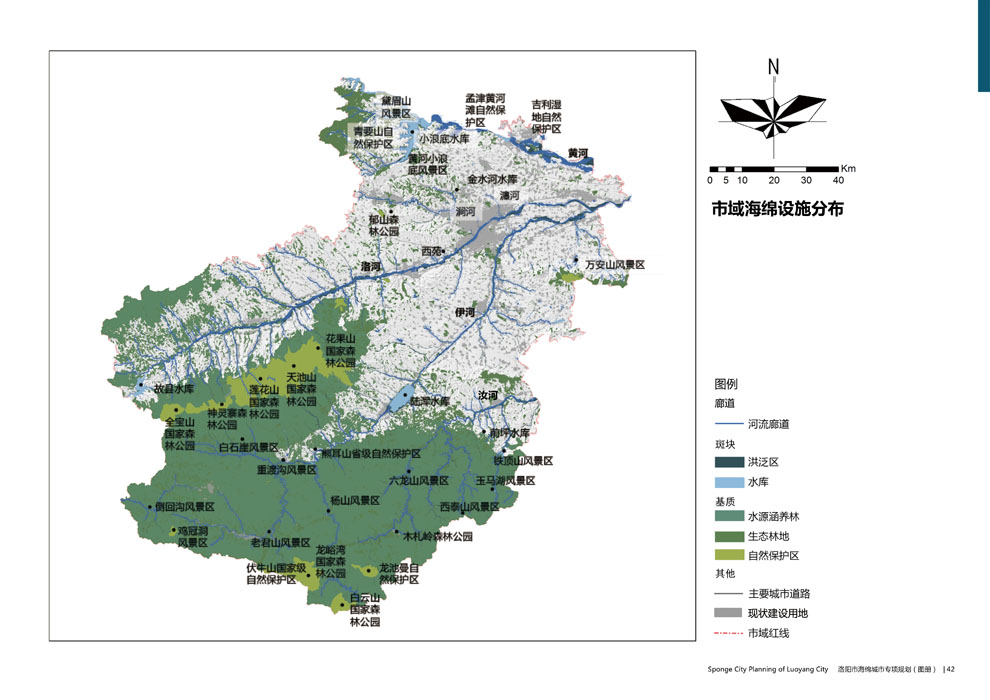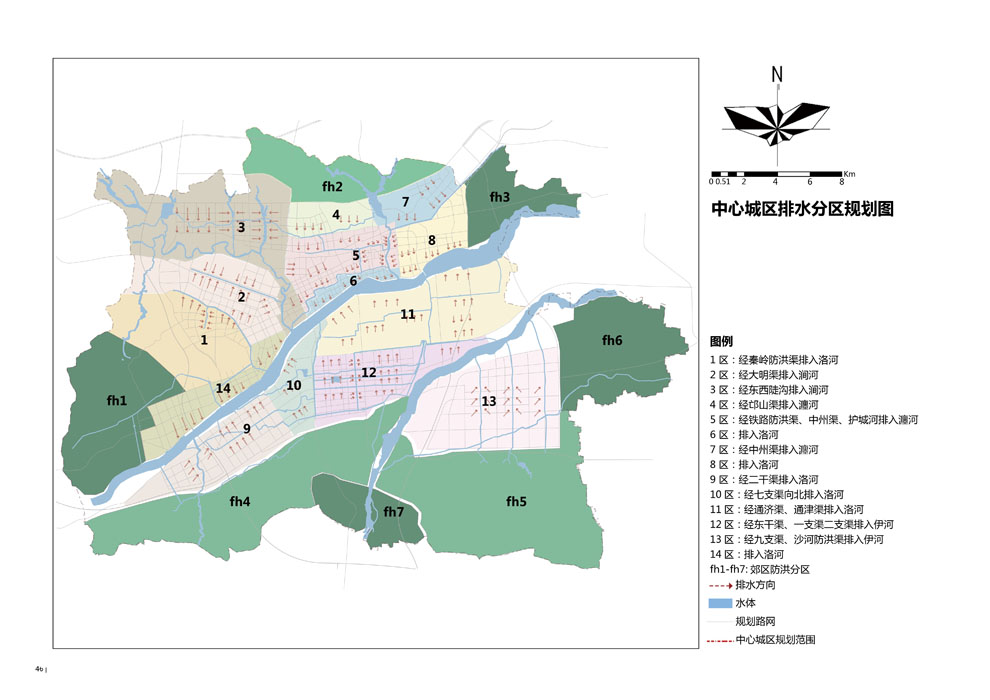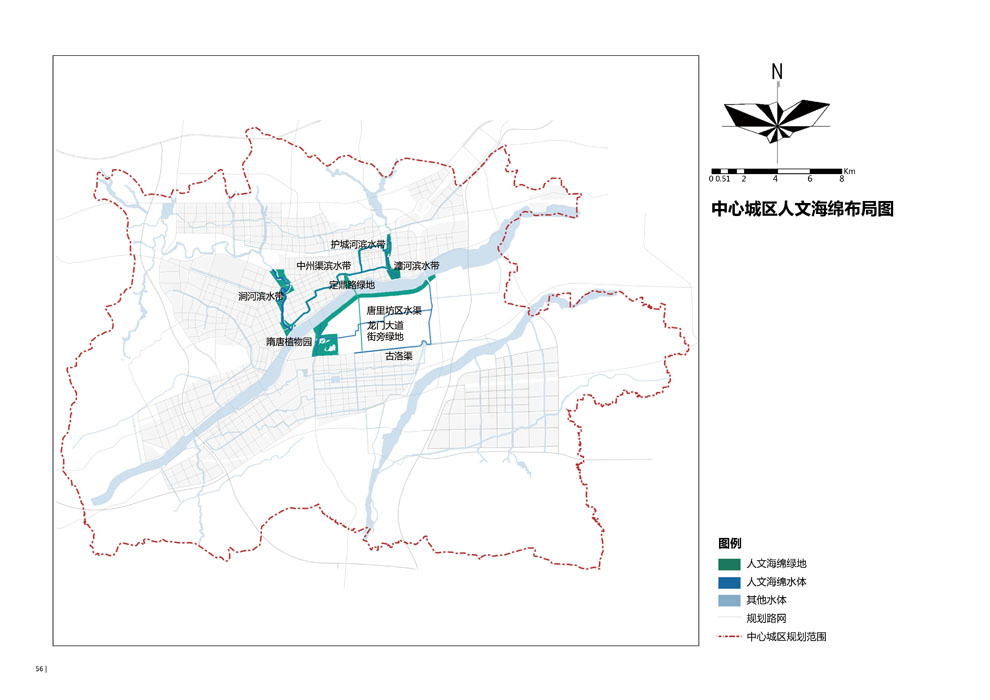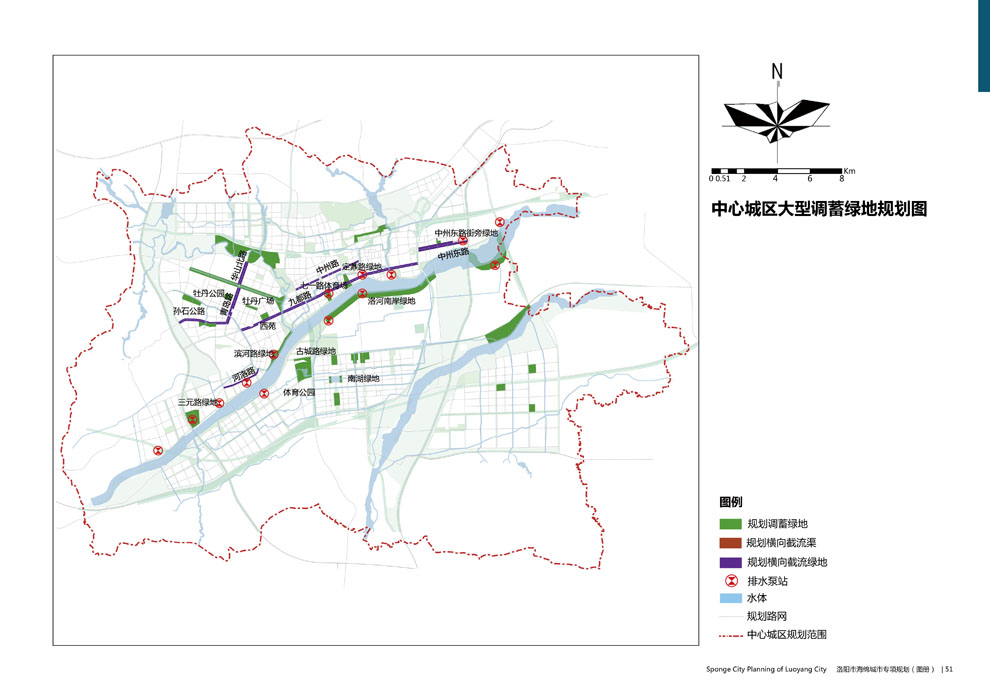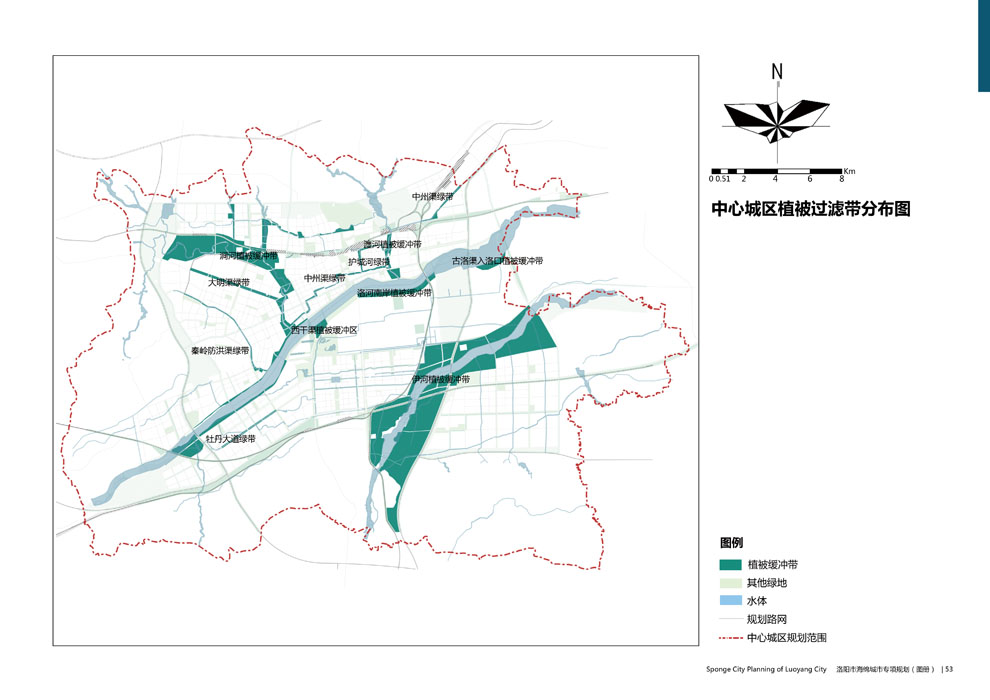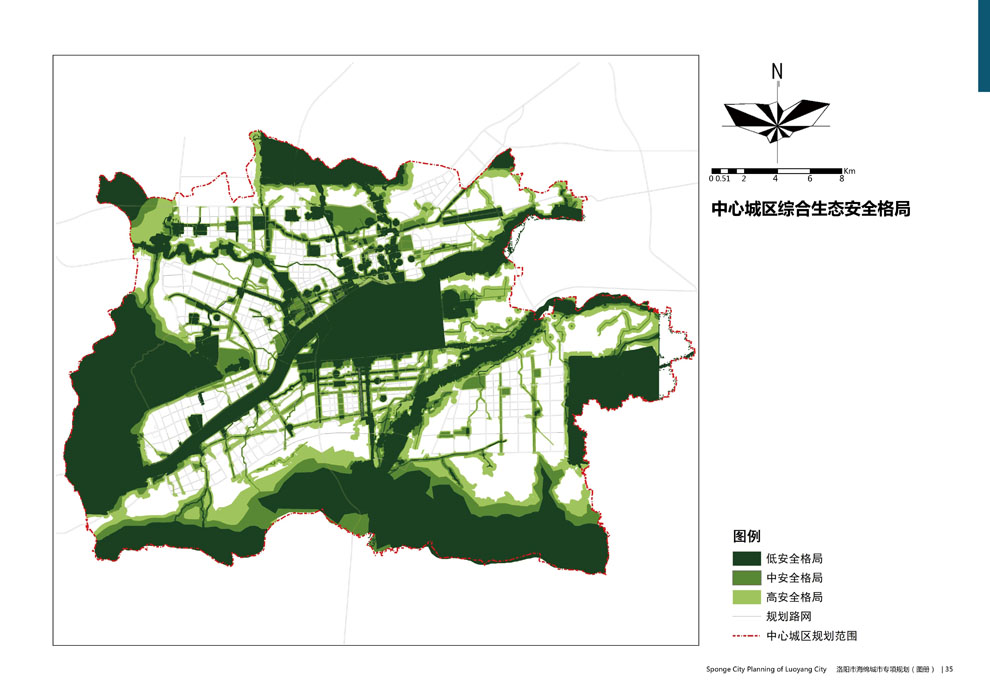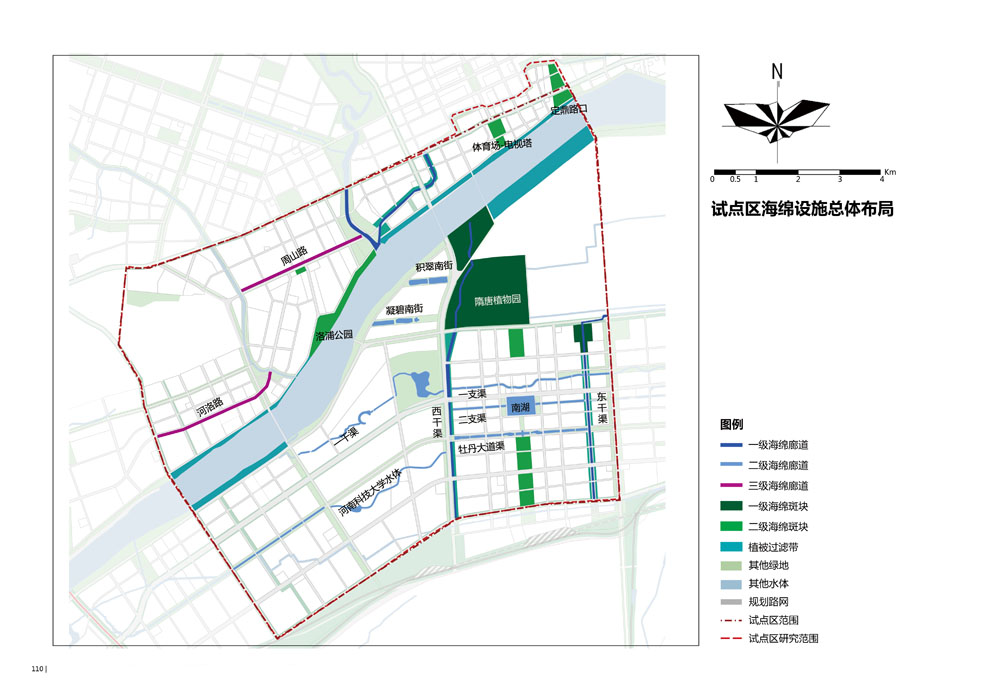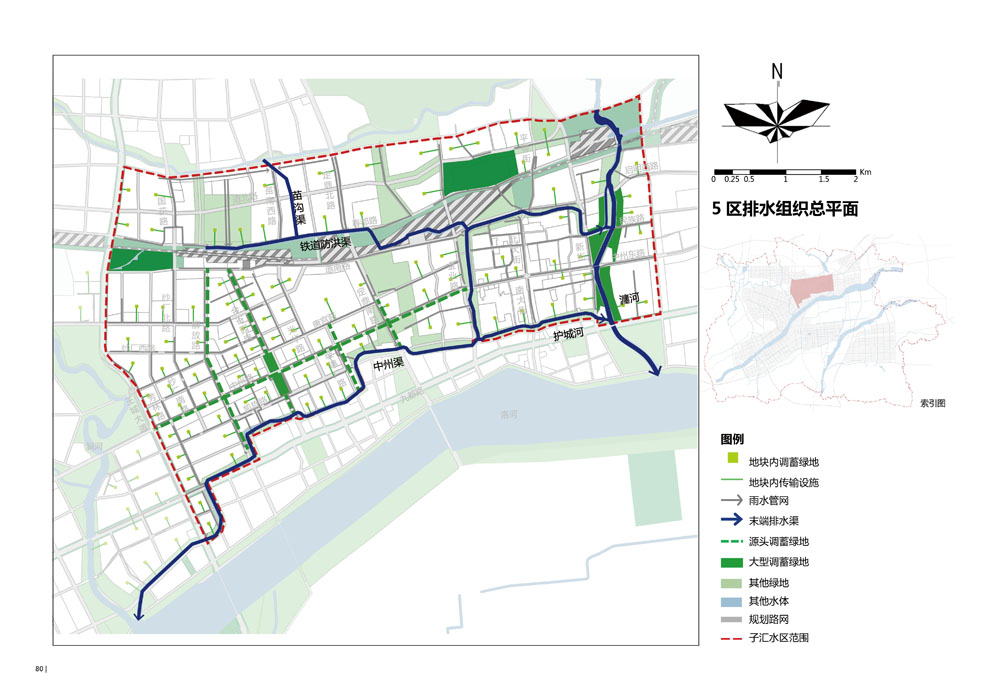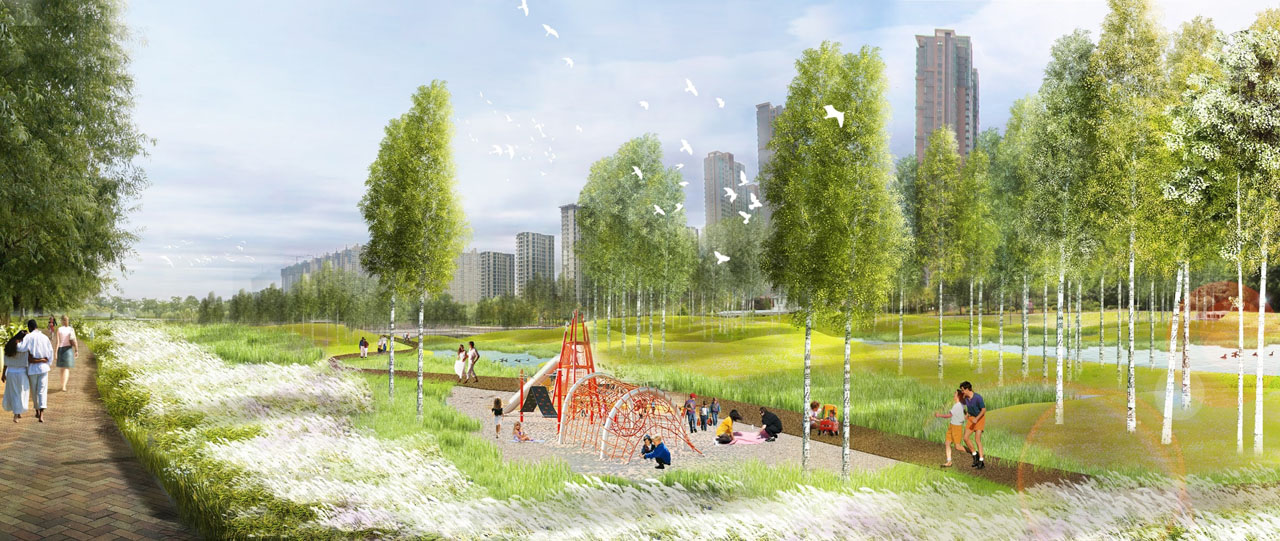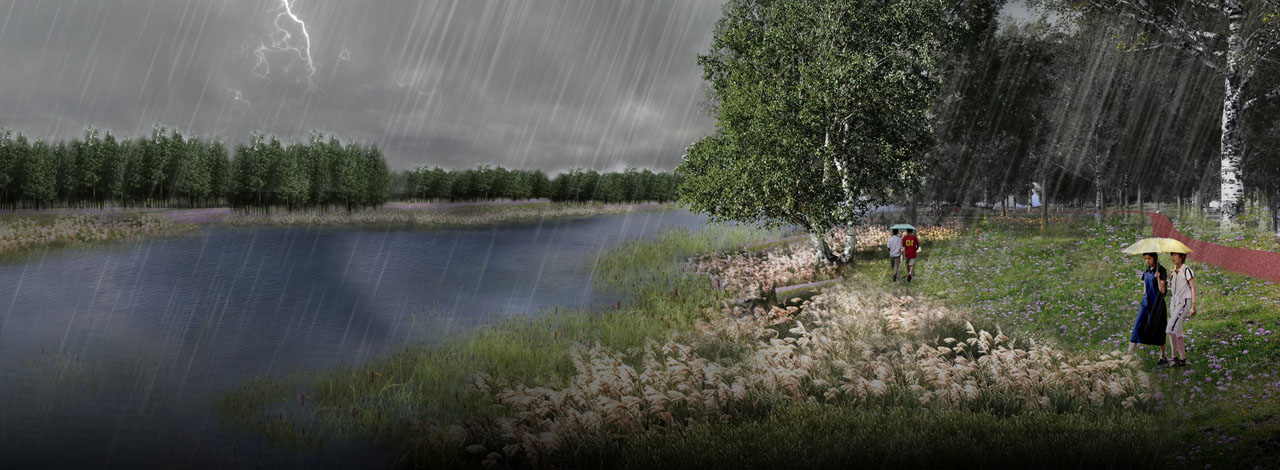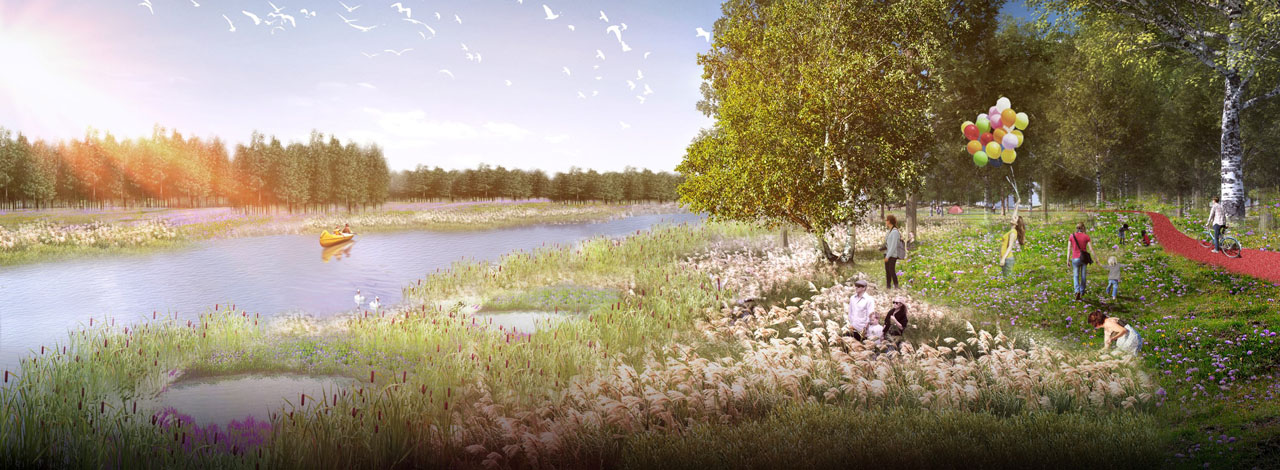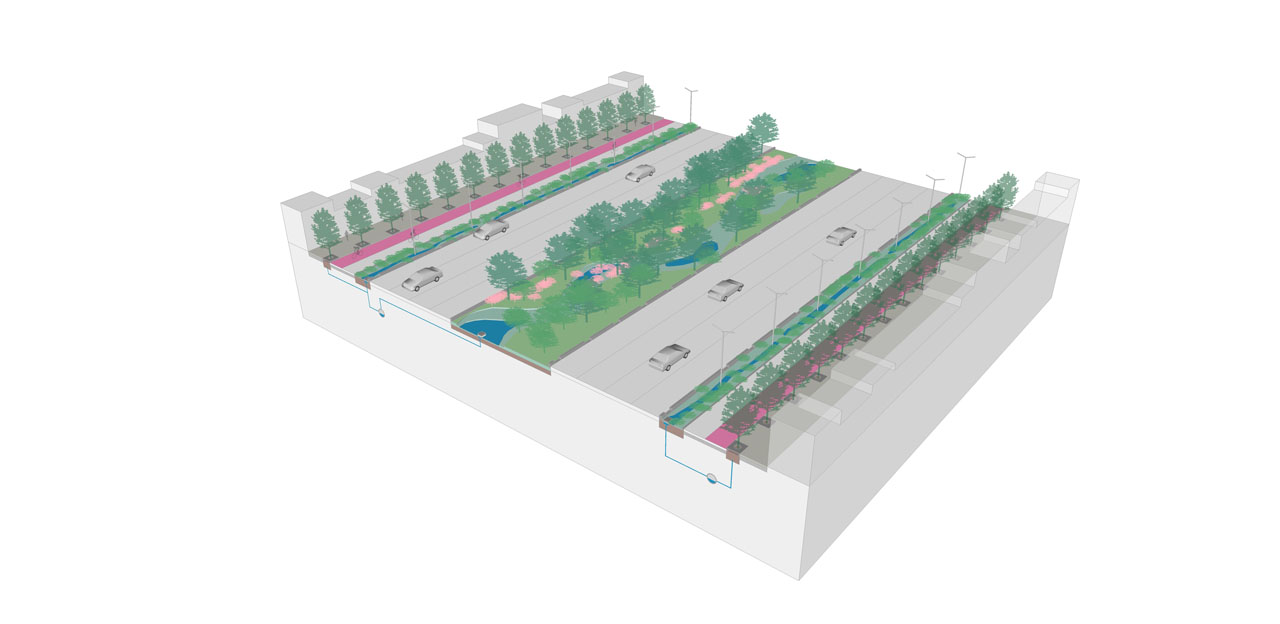Luoyang Sponge City Planning
Project Information
- Project Location:
- China Luoyang, Henan
- Project Scale:
- 61400 Hectares
- Design Time:
- April 2016
Project Profile
1. Project Statement
Luoyang is an ancient and significant capital city in China, characterized by an extensive network of rivers and rich cultural heritage. In response to the national call for the construction of sponge cities, and to ensure urban ecological safety, alleviate urban flooding, and highlight regional cultural characteristics, the goal is to create a cultural sponge city that integrates "four waters converging into the city, and the city blending with water." The project's overall approach involves macro-level implementation of ecological foundations, meso-level organization of sponge structures, and micro-level guidance for sponge implementation. It thoroughly analyzes the ecological and cultural issues and characteristics of Luoyang, establishing a multifunctional sponge system tailored to the local context. This system aims to meet goals for water safety, water ecology, water environment, and water resources, while also enhancing cultural aspects in the spatial structure. Based on this, construction guidelines are proposed for different land use types, with conceptual designs for typical roads, residential areas, and river green spaces to guide subsequent development.
2. Objective and Challenge
A. Ecological Challenges:
Luoyang is located in central China, where annual rainfall varies greatly, and seasonal distribution is uneven. The amount of rainfall is less than evaporation. Rapid urbanization has replaced permeable green fields with hard surfaces, and natural drainage systems have been replaced by underground grey infrastructure. River channelization has decreased natural water retention capacity. Recently, the frequency of heavy rain has increased, and the infrastructure is inadequate, leading to frequent urban flooding. Due to a lack of public environmental awareness and insufficient government supervision, many rivers are polluted and the water quality is substandard. Although Luoyang has an extensive river network, water resource utilization is inefficient, with per capita water resources at only 53 cubic meters per person, making it a water-scarce city. Addressing urban ecological cycles, alleviating flooding and environmental pressure, and improving water resource utilization are major challenges for this project.
B. Cultural Challenges:
As an ancient capital of multiple dynasties, Luoyang has a wealth of historical relics and vibrant folk culture, with numerous underground city ruins and tombs. Due to geological reasons, the city’s river channels are deep and have significant elevation differences with the surface, reducing their recreational value. Combining existing cultural resources to reflect Luoyang's cultural status, enhancing the recreational value of river channels, and minimizing the impact of sponge city construction on historical heritage are key challenges.
C. Construction Challenges:
Sponge city planning and construction have long cycles and intersect with multiple urban plans. Providing control guidance for different construction phases, statuses, and land use types, and ensuring alignment with other urban planning outcomes, is another challenge.
D. Planning and Design Goals:
Ensuring regional ecological safety based on national sponge city requirements for water ecology, safety, environment, and resources. Controlling key ecological patterns to reduce urban flooding risk, alleviate water environment pressure, and improve water resource utilization. Enhancing the cultural dimension of sponge cities to balance ecological civilization with historical culture, reflecting contemporary planning's cultural cognition and expression. Coordinating the special plan for sponge cities with other plans, providing guiding solutions for various areas and plots, and ensuring the feasibility of sponge city construction.
3. Design Strategy
A. Establish a Multi-Level Sponge System Based on Ecological Infrastructure:
Comprehensively analyze factors such as water ecology, biological habitats, food production, and cultural recreation to establish multi-level ecological safety patterns at city, urban planning area, and urban core area levels. Construct a complete sponge system of mountains, waters, forests, fields, and lakes to ensure system safety. Identify current urban water environment issues and divide the central urban area into 14 drainage districts and 49 sponge control units. Gradually deepen sponge facilities at city center, pilot area, and sponge district levels, constructing four-level sponge corridors and two-level sponge green spaces.
B. Scientific Planning, Combining Grey and Green Infrastructure:
Unit Division: Use GIS to analyze urban surface elevation, combined with the layout of pipelines and higher-level urban planning, to reasonably delineate sponge control units, ensuring each unit independently manages risks and comprehensively enhances regional ecological safety.
Indicator Decomposition: Use statistical calculations to gradually divide annual net runoff control rate indicators, ensuring the sustainability of runoff control.
Facility Layout: Based on runoff analysis, reasonably layout surface water retention and purification green spaces, add interception channels, and build a combined grey-green sponge system.
Facility Scale: Determine the scale of underground pipelines, open channels, and green spaces based on local rainfall data. Use PCSWMM for verification to ensure the practical implementation of the sponge system.
C. Implementing Sponges in Phases and Types to Ensure Planning Feasibility:
Gradual Implementation: Based on thorough research of Luoyang's hydrological conditions, sponge construction potential, and constraints, prioritize urban flooding and water quality safety as the foundation, gradually restoring urban water ecology, supplementing water resources, and constructing source-to-end sponge facilities to enhance urban resilience.
Differentiated Approach for New and Old Urban Areas: For old urban areas, adopt a problem-oriented approach with lower indicators, mainly using infiltration promotion, pipeline upgrades, and river channel improvement to alleviate issues. For new urban areas, adopt a target-oriented approach with higher indicators, constructing a comprehensive grey-green source-to-end sponge system to enhance urban sponge resilience.
Planning Coordination and Construction Guidance: Clarify the relationship between the sponge city special plan and other urban plans, specifying combined issues and timelines, facilitating orderly work for planning and construction departments, and ensuring the smooth implementation of the sponge city special plan in socio-economic aspects. Establish sponge city construction guidelines and diagrams to guide sponge construction in terms of construction indicators, facility layout methods, and landscape integration. Provide sponge design demonstrations for four types of land use to guide key areas’ sponge construction.
D. Construct Cultural Sponge Facilities to Highlight Luoyang's Ancient Capital Characteristics:
Cultural Sponge Construction: As an ancient capital of multiple dynasties, Luoyang has rich cultural heritage. Plan the construction of a comprehensive cultural sponge green corridor using historical axes like the Tang Dynasty central axis and ancient water systems as the framework, showcasing the new era charm of the ancient capital. Optimize the overall appearance of the Sui and Tang Luoyang city ruins area, integrating cultural recreation points to create an urban central green space focused on cultural tourism and ecological agriculture. Utilize surface ancient channels for organized drainage, improving the sponge system.
Defining Sponge Construction Priorities: Avoid concentrated infiltration in the urban center, ensure proper drainage to protect heritage sites from impact. In peripheral areas with archaeological sites, control mountain flooding to prevent soil erosion.
4. Conclusion
Through the identification of ecological foundations, organization of sponge structures, and implementation of sponge facilities, establish a multi-scale, multi-level, partitioned comprehensive sponge system centered on source control. This system aims to meet regional ecological functions while enhancing cultural aspects. Utilize various methods for indicator verification, propose multi-dimensional control guidance for planning plots, including indicators, construction models, and demonstration projects, and explain the connection with other plans. Analyze key points of each project phase to ensure the practical implementation of the sponge city special plan.
